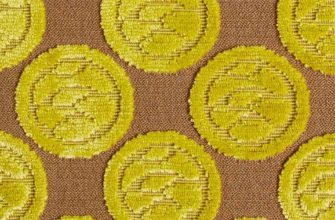Every year at the interior exhibition in Milan, the best designers present current innovations that reflect fashion trends. A modern interior should be stylish, so each designer tries to demonstrate their best works, using new fabrics and accessories, as well as creating original designs.
Tulle occupies an important place in the interior and still remains a popular and relevant element. Textiles add coziness to the room, so plastic blinds and Roman blinds made of synthetic materials, although convenient, are gradually giving way to light and airy tulle.
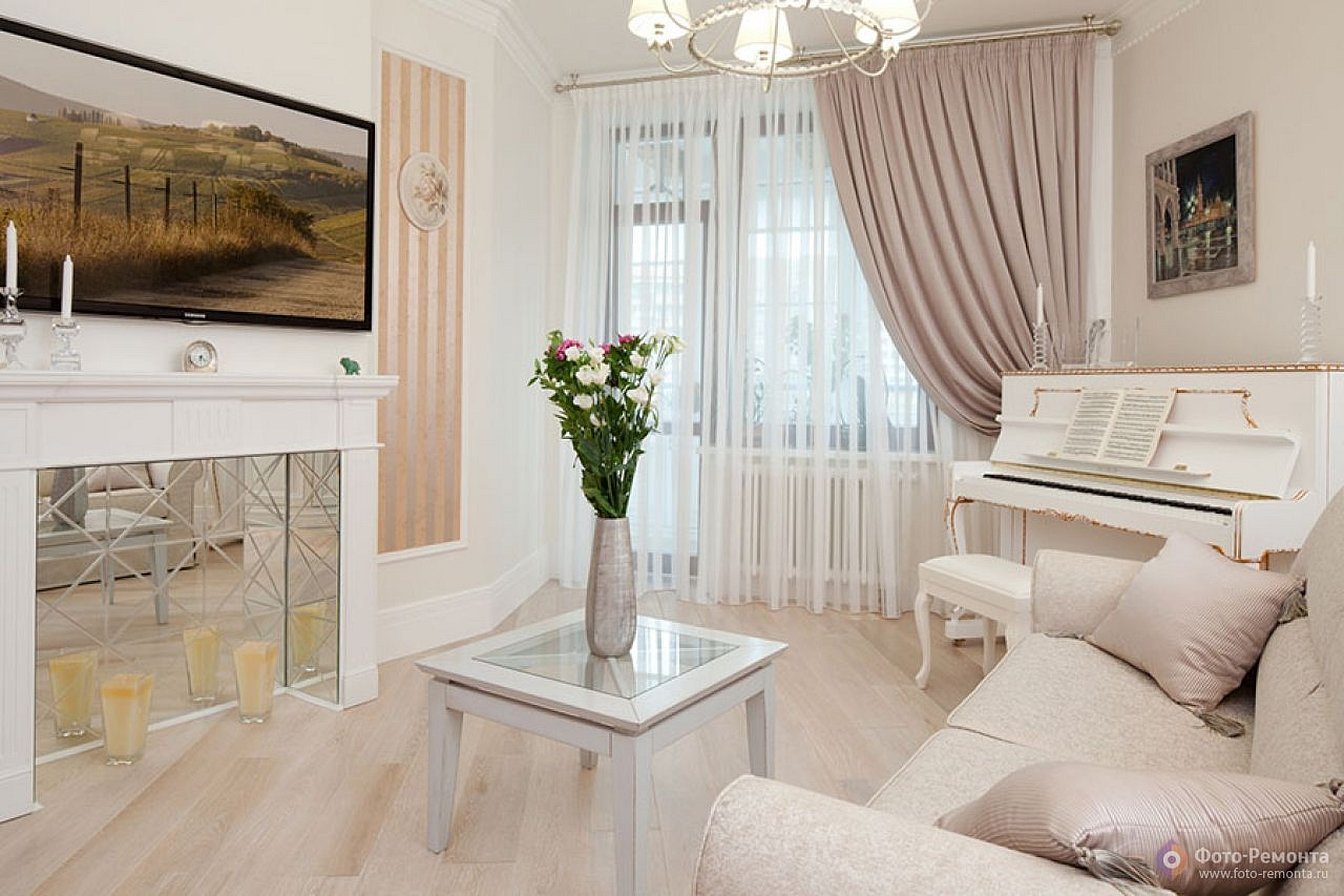
How to choose the right tulle for the hall, what to pay attention to and how to combine it with curtains and drapes? These questions worry everyone who decorates their rooms themselves.
- The main criteria for choosing tulle for living rooms
- Windows and lighting
- By functionality
- By interior style
- Choosing tulle by color and material
- Recommendations for choosing tulle for the living room
- How to choose tulle for a living room in Japanese style
- Tulle and curtains - how to combine correctly: ideas for a hall without curtains
- Choosing tulle for the hall: current trends and innovations
- Which curtain rod to choose
- Caring for tulle: tips and recommendations
The main criteria for choosing tulle for living rooms
Before you start choosing curtains for the main room of your home or apartment, it is worth reading the advice of interior design professionals. They recommend taking key points into account.
Windows and lighting
This is a key aspect that requires attention. The living room should have enough light, so the best choice is light, pastel colors, including white. Bright curtains are appropriate only in rooms facing north and west, as well as in children's rooms. In a teenage boy's room, curtains in cool shades will look good - various shades of blue and gray.
The shape, height and number of windows impose their own requirements on the choice of curtains. For example, if the opening is wide, it is recommended to use tulle with a vertical, pronounced pattern, which will visually raise the ceiling and balance the space. If the windows are located low and there is a lot of space between them and the ceiling, it is advisable to install a baguette or wall cornices.
In typical apartment building projects, the hall often has an exit to the balcony. Therefore, it is important to properly design the living room with windows and a door that open onto the balcony. It would be appropriate to hang curtains and tulle curtains from separate pieces of fabric.
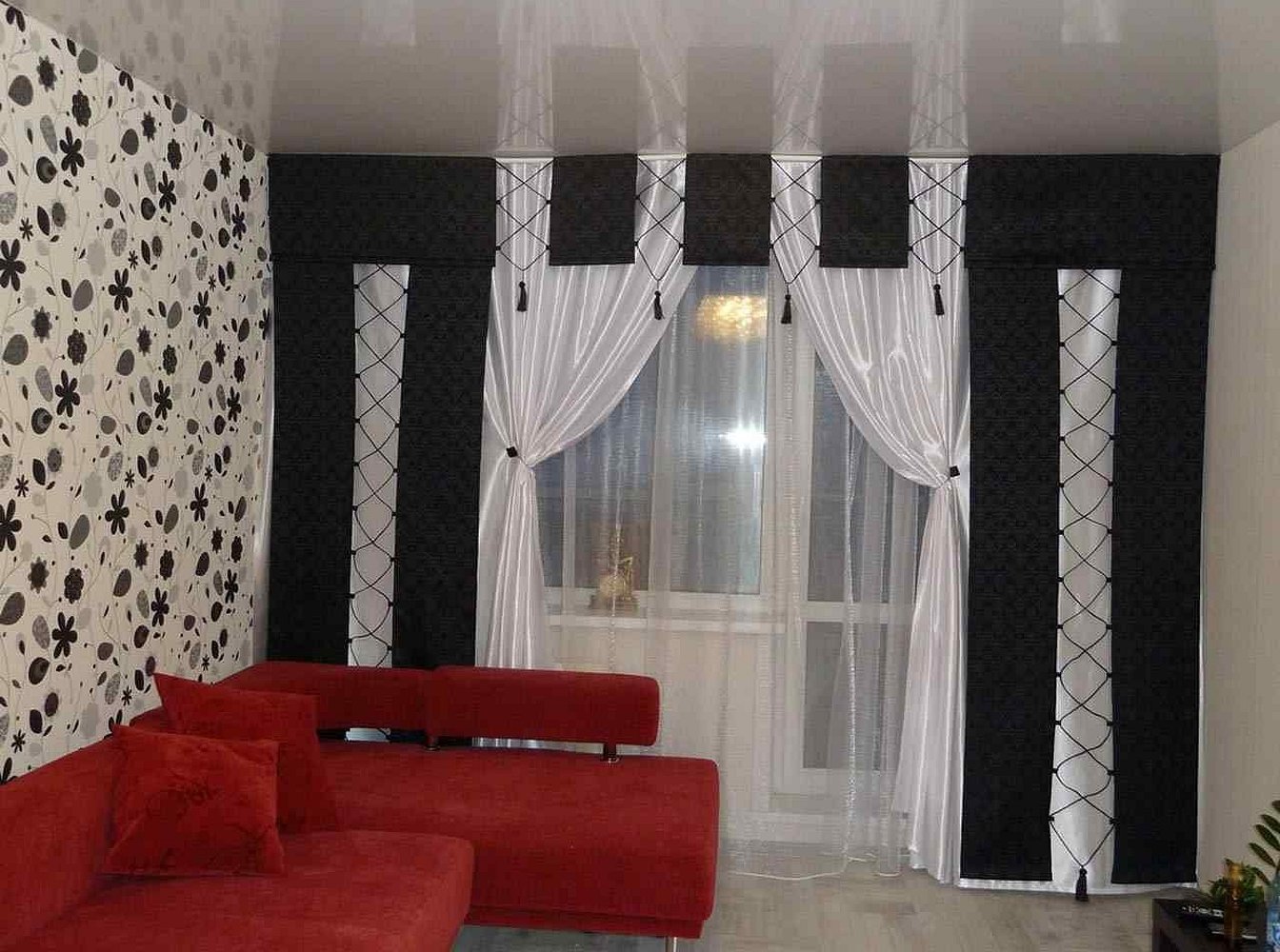
By functionality
When choosing tulle for the hall, it is important to consider the level of natural light. If the windows are oriented to the east or south, preference should be given to dense natural fabrics of light tones. Such fabrics will effectively block bright sunlight, thereby protecting furniture and other interior elements from fading. Modern linen tulle can be a good option. For rooms with insufficient light, it is better to choose light transparent fabrics or nets.
If the curtains play a mainly decorative role, it is necessary to choose the right color. It should be in harmony with the main accent in the interior, for example, with the largest piece of furniture. Or, on the contrary, serve as a background, in this case it is better to choose neutral tones: beige, milky or olive.
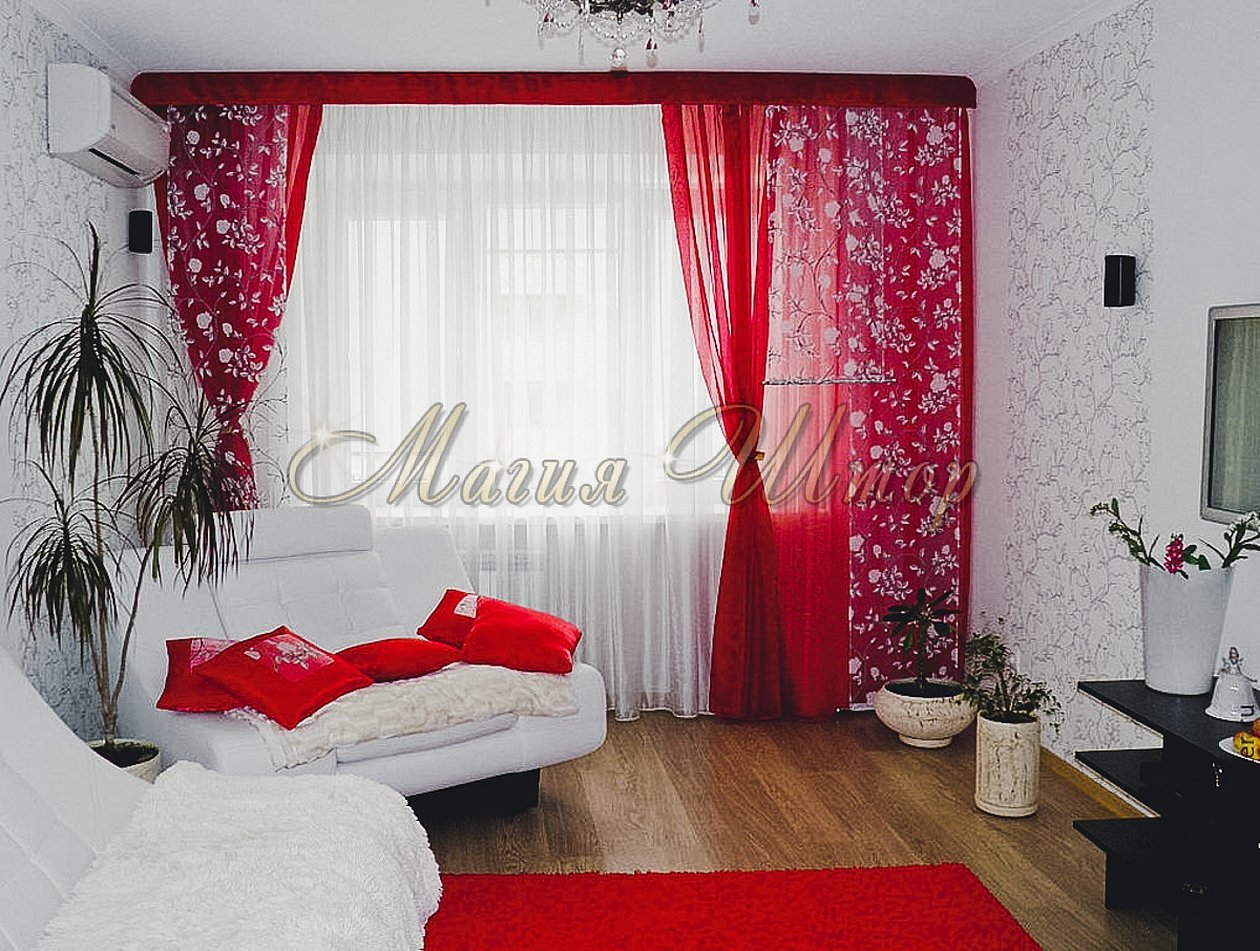
By interior style
The main room should be done in a harmonious style, so you should carefully consider its choice. For interiors in classical and baroque styles, tulle is suitable, which can be decorated with lambrequins, grabs, tassels, and also have gold threads and embroidery.
In minimalism and high-tech, curtains can become the central element of decor, so bright, plain fabrics and textured materials with a rough weave are appropriate.
For Provence, chalet and shabby chic styles, it is worth choosing tulle with floral patterns and lace textures. Most often, tulle with a pattern repeats other textile elements, such as chair covers or sofa upholstery. The design of curtains for these styles allows the use of frills, draperies and lace inserts.
Fabrics with a pronounced texture and large patterns are suitable for ethnic interiors. If the interior is decorated in an oriental style, tulle can be decorated with gold and rhinestones. Bright shades with animal motifs are suitable for an African style.
The Scandinavian style will be supported by cold-colored tulle curtains. It is appropriate to use combinations of transparent and matte stripes.
Important! When choosing tulle for rooms, pay attention to the harmony of texture and color of the curtains.
Choosing tulle by color and material
In the modern world, tulle is distinguished by its diversity. This allows you to choose both elegant curtains for luxurious interiors in the Baroque, Rococo and Art Nouveau styles, and more affordable options for spaces decorated in minimalist, high-tech or loft styles.
Modern technologies make it possible to create easy-to-care-for fabrics.
The following materials are available on the market:
- silk;
- organza;
- viscose;
- muslin;
- tulle;
- veil;
- nylon.
However, there is now a tendency to choose natural materials. Modern tulle made of linen and cotton fibers is perfect for eco-style interiors.
Pay attention to the weave of the threads - stylish tulle has a simple square weave, reminiscent of burlap, with additional seals and knots.

Recommendations for choosing tulle for the living room
Aesthetically attractive tulle for the hall is an important element, Request parameter cover interior.
To avoid making a mistake when choosing, follow these simple recommendations:
- Maintain a unified style when choosing the design of the tulle.
- Try to take into account the lighting of the room and its orientation relative to the cardinal directions.
- Choose a color that harmonizes with the shades of the walls, furniture and other decorative elements.
- Pay attention to the window size, the presence of a door, the ceiling height and the area of the room.
Useful information! Vertical stripes visually raise the ceiling, and horizontal ones expand the space. Light shades make the room brighter, and dark shades create a cozy atmosphere.
How to choose tulle for a living room in Japanese style
Japanese curtains are a screen in which the fabric is attached at the top and bottom to two guides. The number of such screens can vary from two to eight canvases stretched on slats. To create the desired atmosphere, it is preferable to use natural materials, so you should choose linen, cotton or bamboo fabric. In the Japanese style, it is also acceptable to use curtains with patterns.

Tulle and curtains - how to combine correctly: ideas for a hall without curtains
Traditional window treatments usually include tulle and heavy curtains. The focus is on one of these elements - it can be either a curtain or a light transparent tulle.
However, modern interior design allows you to do without curtains. This is especially true for living rooms with large panoramic windows.
In rooms where there are no curtains, tulle performs important decorative functions, so the color and texture should be chosen in accordance with the interior style. Classicism, baroque and modern require the use of rich fabrics, preferably made of natural silk. They can be complemented with embroidery, lurex, tassels and grabs.
For avant-garde styles, smooth, evenly falling translucent curtains made of mesh and simple fabrics with soft folds are suitable.
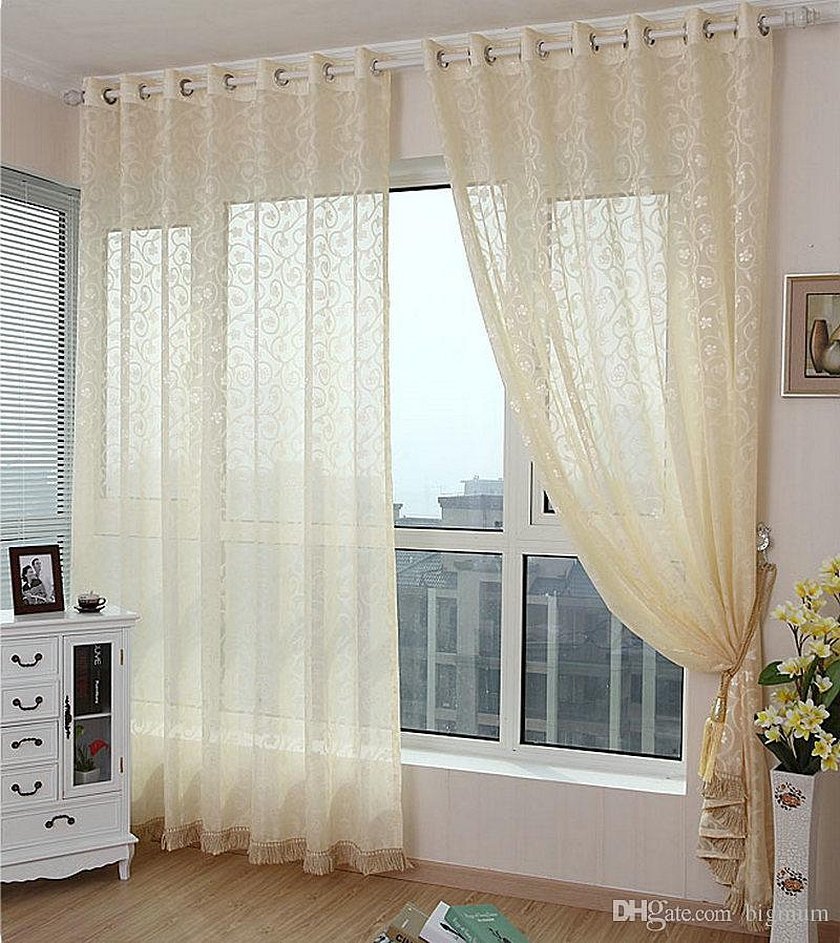
Important! Tulle without curtains is not recommended for the first floors and in conditions of proximity to other buildings. To protect from prying eyes, thick fabrics should be used.
Choosing tulle for the hall: current trends and innovations
Designers claim that in the near future, trends will focus on minimalism in all aspects. Therefore, curtains should be made in subdued colors, without magnificent lambrequins, exquisite decors and multi-layered draperies.
With the development of photo printing technology, it became possible to apply various patterns to thin translucent fabrics. Currently, such window decoration is becoming especially popular. Designer curtains with hand-painted silk can become a real decoration.

Which curtain rod to choose
Curtain fastening is a key aspect of window decoration. The choice of curtain rod should match the style of the interior.
- For classic interiors, baguettes and round rods are suitable, where curtains are attached using eyelets.
- For avant-garde styles, it is better to choose thin strings or flexible aluminum profiles.
- For multi-row Japanese curtains it is necessary to use track or rail cornices.
Curtains can be mounted either on the ceiling or on the wall, depending on the height of the ceiling.
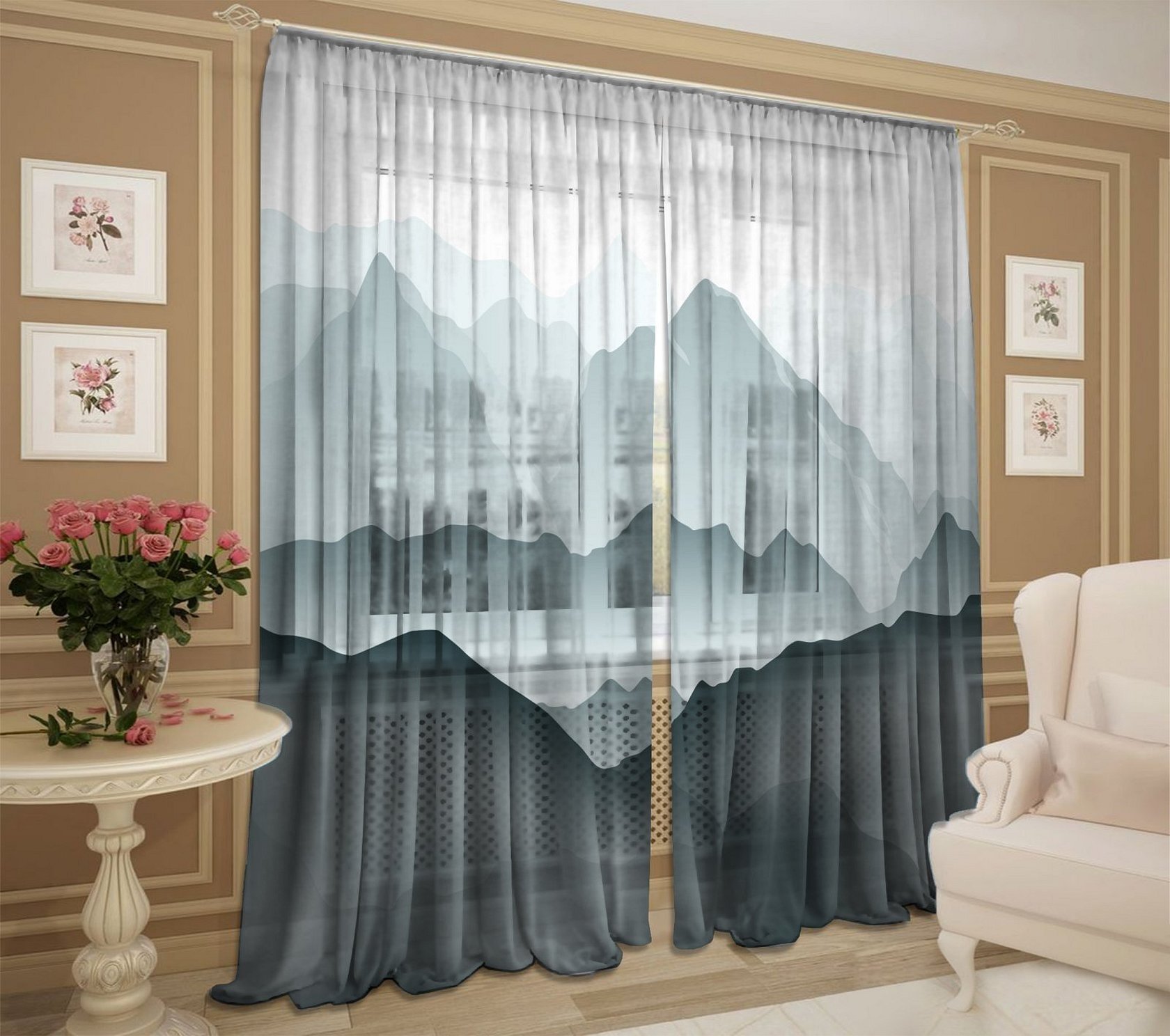
Please note! It is important to consider the weight of the curtains. If tulle is combined with heavy velvet curtains, it is preferable to choose durable metal or wooden rods.
Caring for tulle: tips and recommendations
Tulle is a delicate and light fabric that requires careful handling. Washing should be done in a gentle mode at a temperature not exceeding 40 degrees.
It is important to rinse the material thoroughly so that detergent residues do not cause yellow spots to appear in sunlight. Chlorine-based bleaches can only be used for natural fabrics. To keep synthetic tulle clean, it is recommended to add a little table salt to the washing water.
Ironing tulle curtains is not recommended. It is best to remove creases by not wringing the fabric, but by letting the water drain and hanging it on the curtain rod in a slightly damp state.
This approach will allow you to keep delicate fabric in good condition for a long time.



